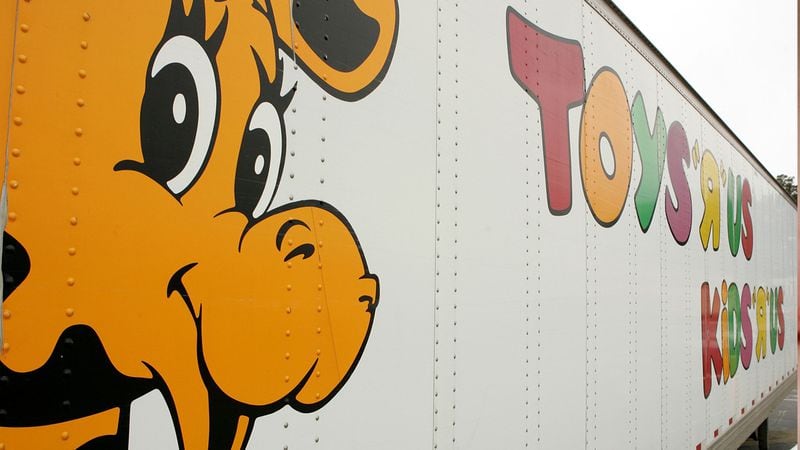Buckhead-based toy store Kazoo Toys knows what its customers want. In fact, customers sometimes even call ahead, ownder Joe Novak said, telling Kazoo information about a child they are buying a present for. When the person arrives, the employees can have a product already picked out and wrapped.
“There is a passion in local toy store owners you won’t find at the person working in the toy aisle at a big box store,” said Steve Pasierb, President of the Toy Association, a toy trade association.
Although it is small, Kazoo has shown growth every year since it opened in 2012, Novak said. Less than two miles away, the Buckhead Toys “R” Us has been closed for three years, a sign of things to come for the toy retailer.
Toys "R" Us closed all of its U.S. stores for good June 29, after announcing in March plans to liquidate in the face of $5 billion in debt. Approximately 33,000 people are losing their jobs, Pasierb said as every Toys "R" Us and Babies "R" Us location in the U.S., including 24 in Georgia, are shuttering.
For the toy industry, this means the loss of one of the largest toy retailers in the country. Toy industry experts predict toy sales to dip between two and three percent for 2018, but believe toy sales will recover in the long run as Christmas and birthdays continue to drive sales regardless of outside factors.
The loss of Toys “R” Us provides increased opportunities for other retailers, from big box retailers such as Target to online retailers to local toy stores, to fill the void left by the one-time toy giant.
Credit: Justin Sullivan/Getty Images
Credit: Justin Sullivan/Getty Images
At the same time, small and medium-sized toy manufacturers are coping with the loss of one of the few national retailers willing to showcase emerging toy brands. Juli Lennett, a vice president and toy expert for the industry analyst company NPD Group, said Toys “R” Us was a place for families to discover new products not available at other retailers.
“Smaller manufacturers are going to be the most hurt,” Lennett said. “Some of them we’ll see acquired by other companies or close their doors. That’s the hardest part.”
Toy sales have proven to be resilient, Lennett said, weathering recession and the growing availability of tablets and smart phones and have show annual growth over the last three years. If the demand for toys remains steady, consumers will have to turn elsewhere to purchase what they might have at Toys “R” Us, which controlled about 12 percent of the market, Lennett said.
The death of Toys “R” Us creates a “Wild West” in the toy industry for at least year, Novak said. Target, Amazon and even seasonal pop-up stores are all players looking to grow their hold on the toy market, he said.
While those companies can provide cheaper products, Novak said his store, along with local toy stores across the country, remain competitive by experimenting with unique products and offering catered customer service. At Kazoo, Novak has built relationships with many of his customers, learning what they, and their children, are looking for.
While console and mobile gaming remains popular among children, many small toy stores are moving in the opposite direction, offering what Atlanta-based toy store Rhen’s Nest calls “unplugged play.” John Bonaccorse, who helps operate Rhen’s Nest along with the founder, his wife Christina, said these non-electronic toys help kids return to what he calls the “core of fun.”
The approach, coupled with Rhen’s Nest focus on customer service and unique products, has benefited the company. After opening its first location in Glenwood Park in 2015, Rhen’s Nest opened a second location at Ponce City Market in 2016 and is looking at going for a possible third location, John Bonaccorse said.
Toy retailers do have to deal with what Novak called “age compression,” as children are aging out of toys faster. A study by the NPD Group of the sales of licensed children’s products shows toys grow less popular as kids grow older, being replaced by video games and electronics.
Also threatening toy retailers is the allure of online shopping, which offers convenience and lower prices. Reports surfaced on July 5 that Amazon was planning to release a holiday toy catalog, similar to the one annually released by Toys “R” Us.
This holiday season will likely give a glimpse as to which retailers will capitalize on the absence of Toys “R” Us and how smaller toy manufacturers will survive without a major retailer. One thing that doesn’t appear to be changing at the moment, however, is the demand for toys nationwide.
“Parents are smart,” Lennett said. “They know how important toys are to the emotional, social and physical development of a kid.”
Toys “R” Us Timeline
Toys “R” Us founded in 1957 in Washington D.C.
September 2017: Toys “R” Us files for bankruptcy
March 2018: Company files for liquidation, indicating it would close its 735 U.S. locations
June 2018: Toys “R” Us closes all remaining U.S. stores






